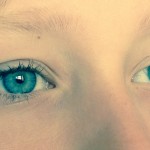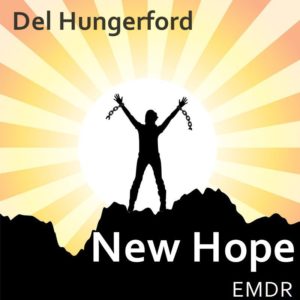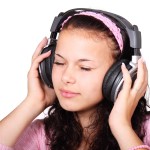 EMDR is the acronym for “Eye Movement Desensitization Reprocessing” and is a method of psychotherapy used only by trained professionals.
EMDR is the acronym for “Eye Movement Desensitization Reprocessing” and is a method of psychotherapy used only by trained professionals.
Music outside of a therapy session is considered to be “EMDR-inspired” so the individual can experience “processing” or “reprocessing.” Because there is little music out there for this purpose, I have taken my music and made it workable for both therapists and clients to use at home and/or during sessions.
To explain a bit… reprocessing happens when you experience a state of mind that allows you to change a negative reaction or emotional symptom that has been “stuck.” Examples may include natural disasters, war, assault, abuse, divorce, or other traumatic events that are often difficult to heal from. During a therapy session, the client is asked to focus on a disturbing feeling or memory while doing something that is meant to activate both sides of the brain. This is done via several methods, including music or a tone that “pans” from ear to ear.

New Hope EMDR full album download – $9.99
There are many therapies that focus on connecting the left and right brain hemispheres so that the two can work together. In a sense, this is what EMDR therapy accomplishes. I’m not sure there’s any scientific evidence to back that up… yet. However, positive results from patients in EMDR therapy indicate that something about it is very effective. The company called Brain Balance is doing similar things (also utilizing music) for children with behavioral and autism spectrum disorders.
Dr. Francine Shapiro is the founder of EMDR and after getting much flack (which tends to happen with anything new), the results she was seeing with EMDR therapy couldn’t be ignored. She now has a training center for therapists called the EMDR Institute, located in California. And, if you’re interested in finding a trained therapist in your area, the Institute can help locate one for you.
How does music work with EMDR therapy?
 From what I understand in talking with clients, they are instructed to listen to music that gently pans between ear to ear while wearing head phones. In a sense, it’s similar to the effects of the rapid eye movement during sleep. We do know that during REM sleep, we often process much of what we go through in our lives. Because my goal is to bring healing properties into my music, I knew that I had to do more research and then create EMDR inspired music myself. With the help of my audio engineer, David Bjur, at Washington State University, we found a method of “panning” several selections of my previously recorded music so it now can be used for EMDR therapy. Click HERE to listen to samples and/or purchase my EMDR or “bilateral” music.
From what I understand in talking with clients, they are instructed to listen to music that gently pans between ear to ear while wearing head phones. In a sense, it’s similar to the effects of the rapid eye movement during sleep. We do know that during REM sleep, we often process much of what we go through in our lives. Because my goal is to bring healing properties into my music, I knew that I had to do more research and then create EMDR inspired music myself. With the help of my audio engineer, David Bjur, at Washington State University, we found a method of “panning” several selections of my previously recorded music so it now can be used for EMDR therapy. Click HERE to listen to samples and/or purchase my EMDR or “bilateral” music.
If this is something you’re interested in, I encourage you to talk with your therapist about the possibility of using EMDR inspired music. I would love to hear how this music has affected you so please post your comments below!
ADDED in 2018!
Since this original post, I’ve learned a lot more about EMDR (bilateral) music. Customers are sharing how they are using my EMDR music. To learn more, watch this short video. If you have your own suggestions or stories to tell, feel free to leave them on my YouTube channel or comment below.
[mailerlite_form form_id=2]

